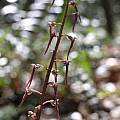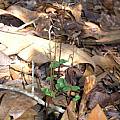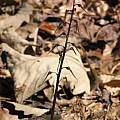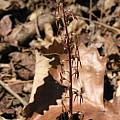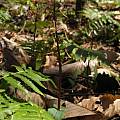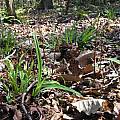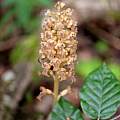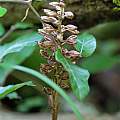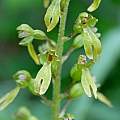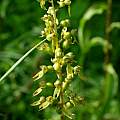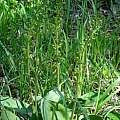Neottia is the joined genus of former photosynthetic Listera and mycotrophic Neottia after phylogenetic studies proved the chlorophyll-free species have evolved from the other. Its a genus of terrestrial Orchidaceae related to Epipactis and Cephalanthera. The species of this genus spread across temperate regions of the northern hemisphere.
Neottia bifolia (Raf.) Baumbach syn. Listera australis is a winter spring ephemeral species found west to Texas and northwest to Arkansas, southeast to Florida and northeast to North Carolina. This terrestrial species, with a fleshy root system, blooms from late December to March depending on the latitude, altitude, and season in the areas where the species occurs. These specimens are in Gadsden County, Florida. Photos by Alani Davis.
Neottia nidus-avis (L.) Rich. is a widespread species across Europe and Russia. Both the Latin and the English name birds nest orchid refer to the tangled root system similar to a birds nest. Being completely without chlorophyll, the plant lives as a parasite on surrounding trees using fungi as connection. This allows them to grow in very dark forest areas. The sweetly scented flowers appear densely packed on 20-50 cm high spikes in May. They are pollinated by flies.
Neottia ovata (L.) R.Br. syn. Listera ovata is a common yet easily overlooked Eurasian species, as the plant is completely green and the green flowers are rather small. It occurs locally in masses in both dry grassland as well as in open forest areas on alkaline soil. It's most prominent feature are two big leaves in the lower third of the stem, coining the German name "Großes Zweiblatt", which may be the phonetic origin of the English "Greater Twayblade". Pictures by Martin Bohnet of plants growing in a forest on the Swabian Alp.
